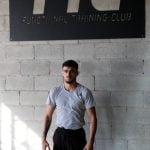Fitness testing for sport and exercise plays a crucial role in evaluating an individual’s physical abilities, determining their baseline fitness levels, and tracking progress over time. By conducting various fitness tests, athletes and fitness enthusiasts can identify strengths and weaknesses, set realistic goals, and design tailored training programs to enhance overall performance. Whether you are a professional athlete or a casual gym-goer, understanding the importance of fitness testing is essential for optimizing your workout routine.
Fitness testing provides valuable insights into an individual’s cardiovascular endurance, muscular strength, flexibility, and body composition. These assessments not only help in measuring athletic performance but also highlight areas that may be prone to injury or require improvement. By utilizing different types of fitness tests, such as VO2 max testing, strength assessments, and flexibility exams, athletes can gain a comprehensive view of their physical capabilities and make informed decisions to reach their full potential.
Furthermore, implementing fitness testing in sports and exercise programs can lead to more effective training regimens and enhanced performance outcomes. By analyzing test results and identifying key areas for development, coaches and trainers can tailor workouts to address specific needs and maximize efficiency. Fitness testing serves as a valuable tool for monitoring progress, adjusting training protocols, and ultimately achieving peak physical condition for optimal success in sports and exercise endeavors.
Types of Fitness Tests
Fitness testing for sport and exercise plays a crucial role in assessing athletes’ physical abilities and monitoring their progress over time. There are various types of fitness tests that can be used to measure different aspects of athletic performance. Some common methods include assessments of cardiovascular endurance, muscular strength, flexibility, agility, and speed. Each type of test provides valuable insights into an athlete’s strengths and areas for improvement.
Cardiovascular endurance tests, such as the beep test or the 12-minute run, are designed to evaluate the efficiency of the heart and lungs in delivering oxygen to working muscles during prolonged exercise. Muscular strength tests, like the bench press or squat max test, assess the maximum force a muscle or muscle group can generate.
Flexibility tests, such as the sit-and-reach test, measure the range of motion around a joint and can help prevent injuries related to tight muscles.
Agility and speed tests focus on an athlete’s ability to change direction quickly or cover a specific distance in the shortest amount of time possible. These tests often involve cone drills or timed sprints to evaluate acceleration and deceleration skills. By using a combination of these fitness tests, coaches and trainers can create individualized training programs that address specific areas of weakness while building on an athlete’s strengths.
| Fitness Test Type | Description |
|---|---|
| Cardiovascular Endurance | Evaluates heart and lung performance during prolonged exercise |
| Muscular Strength | Assesses maximum force muscle groups can generate |
| Flexibility | Measures range of motion around joints to prevent injuries |
Benefits of Fitness Testing
Fitness testing plays a crucial role in enhancing training programs and overall performance in sports and exercise. By conducting fitness tests regularly, coaches and athletes can gather valuable data that provides insights into the individual’s strengths, weaknesses, and areas for improvement. This information can then be used to tailor training programs to address specific needs, optimize performance, and prevent injuries.
Personalized Training Programs
One of the key benefits of fitness testing is its ability to inform the development of personalized training programs for athletes. By identifying an individual’s unique physiological characteristics, such as aerobic capacity, strength levels, flexibility, and speed, coaches can create targeted workout plans that address specific areas of improvement. This personalized approach not only helps athletes reach their full potential but also ensures that training is optimized for maximum results.
Tracking Progress and Setting Goals
Fitness testing also enables athletes to track their progress over time and set realistic goals for improvement. By measuring performance at regular intervals, athletes can see tangible evidence of their hard work paying off or identify areas where they may need to focus more attention. This tracking mechanism not only boosts motivation but also allows for adjustments to training programs based on actual data rather than subjective perceptions.
Preventing Injuries and Enhancing Recovery
Another significant benefit of fitness testing is its role in preventing injuries and enhancing recovery from intense training sessions or competitions. By monitoring factors such as muscle imbalances, flexibility limitations, and fatigue levels through various tests like range-of-motion assessments or muscle strength tests, coaches can identify potential injury risks early on.
With this information in hand, they can implement targeted interventions or modifications to training routines to reduce the likelihood of injuries and promote faster recovery times. Ultimately, fitness testing serves as a valuable tool in optimizing athletic performance while prioritizing the athlete’s well-being.
Specific Tests for Different Sports
Physical fitness is a crucial component for athletic performance, and tailoring fitness testing to meet the specific needs of different sports can provide valuable insights into an athlete’s strengths and weaknesses. By conducting sport-specific fitness tests, coaches and trainers can design more targeted training programs to enhance overall performance.
Endurance Sports
For endurance sports such as long-distance running or cycling, aerobic capacity is a key factor in determining an athlete’s success. Fitness testing methods like VO2 max testing can measure the maximum amount of oxygen an individual can utilize during intense exercise, providing valuable information on cardiovascular fitness levels. Additionally, lactate threshold tests can help determine the point at which an athlete fatigues due to lactic acid accumulation, aiding in developing optimal pacing strategies for endurance events.
Strength and Power Sports
In contrast, sports that require explosive movements and high levels of strength, such as weightlifting or sprinting, benefit from fitness tests that focus on power output and muscular strength. Tests like the vertical jump test or one-rep max assessments can provide insight into an athlete’s explosive strength capabilities, aiding in the development of targeted strength training programs to improve performance in these types of sports.
Team Sports
For team sports like soccer or basketball, where a combination of endurance, speed, agility, and coordination is required, comprehensive fitness testing protocols are essential. Tests that evaluate agility, sprint speed, anaerobic power, and reaction time can help coaches identify areas for improvement in each player’s performance. By tailoring fitness testing to meet the demands of specific team sports, coaches can better prepare their athletes for success on the field or court.
The Science Behind Fitness Testing
Fitness testing for sport and exercise involves a deep understanding of the physiology and biomechanics that play a crucial role in athletic performance. By delving into the science behind fitness testing, coaches, trainers, and athletes can gain valuable insights into how the body functions during different types of physical activities. Here are some key aspects to consider when exploring the physiology and biomechanics involved in fitness testing:
- Energy Systems: Understanding how the body produces energy during exercise is essential for designing effective training programs. The three main energy systems – ATP-PCr, glycolytic, and oxidative – are responsible for providing the necessary fuel for various intensities and durations of physical activity.
- Muscle Fiber Types: Different individuals possess varying percentages of fast-twitch (Type II) and slow-twitch (Type I) muscle fibers, which influence their athletic abilities. Fitness tests can help determine an individual’s muscle fiber composition, allowing for tailored training strategies to maximize performance.
- Biomechanical Analysis: Assessing movement patterns, joint angles, force production, and other biomechanical factors can provide valuable information on an athlete’s technique and efficiency in executing sports-specific skills. By analyzing these parameters through fitness testing, coaches can pinpoint areas for improvement to enhance overall performance.
In addition to understanding the physiological responses to exercise and movement patterns, considering factors such as oxygen consumption, heart rate variability, lactate threshold, and recovery rates is crucial in conducting comprehensive fitness tests. These measurements offer valuable insights into an individual’s cardiovascular endurance, metabolic efficiency, anaerobic capacity, and overall readiness for competition or training sessions.
Overall, diving into the science behind fitness testing provides a solid foundation for optimizing athletic performance by tailoring training programs based on individual physiological characteristics and biomechanical principles. By leveraging this knowledge effectively in conjunction with practical application through various tests and assessments, athletes can enhance their strengths, address weaknesses, and achieve peak performance levels in their respective sports or exercise pursuits.
How to Conduct Fitness Testing
Fitness testing for sport and exercise is a crucial component in assessing an individual’s physical capabilities and tracking their progress over time. Conducting these tests in a structured and systematic manner is essential to ensure accurate results and provide valuable insights for athletes, coaches, and fitness enthusiasts alike. Here is a step-by-step guide on how to conduct fitness testing effectively:
1. Preparation: Before conducting any fitness tests, it is important to establish clear goals and objectives for the testing process. Determine what specific aspects of fitness you want to assess, whether it be cardiovascular endurance, strength, agility, or flexibility. Additionally, ensure that the testing environment is safe and suitable for conducting various tests.
2. Selection of Tests: Choose appropriate fitness tests based on the goals of the assessment and the individuals being tested. Consider factors such as age, fitness level, and the sport or exercise activity they are involved in. Common fitness tests include the beep test for cardiovascular endurance, 1RM testing for strength assessment, shuttle run for agility evaluation, and sit-and-reach test for flexibility.
3. Administration: Administer each test following standardized protocols and guidelines to maintain consistency and accuracy across all participants. Clearly explain the instructions for each test to ensure proper execution by the individual being tested. Use reliable equipment to measure performance accurately and record all data systematically.
4. Data Analysis: Once all tests have been completed, analyze the results carefully to identify strengths, weaknesses, and areas for improvement in the individual’s fitness profile. Compare the results against established norms or benchmarks to better understand where they stand relative to peers or standards in their sport or activity.
By following these steps diligently when conducting fitness testing for sport and exercise, you can gather valuable information about an individual’s physical abilities, track changes over time, tailor training programs accordingly, and ultimately enhance their athletic performance in a strategic and effective manner.
Interpreting Results
Interpreting the results of fitness testing for sport and exercise is a crucial step towards improving athletic performance. Once the data from various fitness tests has been collected, it is essential to analyze these results to gain insights into an individual’s strengths and weaknesses. By understanding where an athlete excels and where improvements are needed, coaches and trainers can develop targeted training programs to enhance overall performance.
One key aspect of interpreting fitness testing results is looking at trends over time. Tracking changes in test outcomes across multiple testing sessions can provide valuable information on the effectiveness of training interventions.
For example, if an athlete’s speed and agility scores have improved significantly after implementing a new training regimen, it indicates that the program is working well. On the other hand, if there are no notable changes in certain areas, adjustments may need to be made to optimize training strategies.
Moreover, interpreting fitness testing results goes beyond just numbers on a spreadsheet. It involves understanding the context in which the tests were conducted, taking into account factors such as environmental conditions, fatigue levels, and any other variables that may have influenced the outcomes. By carefully analyzing all aspects of the data, coaches and trainers can make informed decisions on how to modify training routines and optimize performance outcomes.
| Interpreting Fitness Testing Results | Key Considerations |
|---|---|
| Trends over time | Track changes for progress evaluation |
| Context matters | Consider environmental factors & fatigue levels |
Case Studies
Fitness testing plays a crucial role in optimizing athletic performance and tailoring training programs to meet the specific needs of individual athletes. By conducting comprehensive fitness assessments, coaches and trainers can gather valuable data that can guide their decision-making process and help them design more effective workout regimens.
For example, a case study involving a professional soccer team showed significant improvements in players’ speed, endurance, and agility after implementing regular fitness testing protocols tailored to the demands of the sport.
Furthermore, fitness testing can also provide insights into athletes’ strengths and weaknesses, allowing for targeted interventions to address any areas of improvement. In another case study involving a college track team, coaches were able to identify specific muscle imbalances through fitness testing and subsequently implement corrective exercises that led to enhanced performance and reduced risk of injury. This highlights the importance of using data-driven approaches in sports training to maximize potential and minimize setbacks.
Overall, these real-life examples underscore the transformative impact that fitness testing can have on athletes’ performance levels and overall well-being. By leveraging scientific principles and advanced technologies in fitness assessment, coaches can develop personalized training programs that are tailored to each athlete’s unique physiology and biomechanics. As such, incorporating regular fitness testing into sports training routines is essential for unlocking athletes’ full potential and achieving peak performance on the field or court.
Future Trends in Fitness Testing
In conclusion, the future of fitness testing for sport and exercise holds great promise for enhancing athletic performance. As technology continues to advance, we can expect innovations in testing methods and equipment that will provide even more accurate and detailed assessments of an individual’s physical capabilities. These developments will not only benefit elite athletes but also those at various levels of fitness striving to improve their overall health and wellness.
One exciting trend on the horizon is the integration of wearable technology into fitness testing protocols. Devices such as fitness trackers and smart clothing can collect real-time data on an individual’s performance, allowing for more frequent and nuanced assessments.
This continuous monitoring will enable trainers and coaches to make timely adjustments to training programs, leading to optimized results in a shorter timeframe. Additionally, the use of virtual reality simulations in fitness testing may revolutionize how athletes prepare for competition by providing immersive environments to mimic real-life scenarios.
Furthermore, as research in exercise physiology and biomechanics advances, we can anticipate the development of new tests that delve deeper into specific aspects of athletic performance. From genetic profiling to personalized training prescriptions based on individual characteristics, the future of fitness testing is poised to revolutionize how athletes train and compete. By staying abreast of these emerging trends, sports professionals can ensure they are at the forefront of innovation in maximizing human potential through tailored fitness testing programs.
Frequently Asked Questions
What Are the 5 Physical Fitness Tests?
The five physical fitness tests commonly used are the push-up test, sit and reach test, one-mile run test, curl-up test, and the plank test. These tests assess different aspects of physical health and strength to provide a comprehensive view of one’s fitness level.
What Is Fitness Testing in Sport?
Fitness testing in sport is a way to evaluate an athlete’s physical performance and abilities. It involves various tests that measure strength, endurance, flexibility, speed, agility, and other factors relevant to specific sports. The results help coaches tailor training programs to improve athletes’ performance.
What Are the 4 Fitness Tests?
The four fitness tests often used are the beep test (also known as the shuttle run test), 12-minute run/walk test, skinfold body fat measurement, and the vertical jump test. Each of these assessments targets different areas such as cardiovascular endurance, body composition, and power. They provide valuable information for designing personalized fitness plans.

Passionate about providing useful information to anyone with an interest in the field of Personal Training, I strive to pass on to our readers quality information and to answer any questions about Personal Trainers, the work they do and how to become one.





